Neapolitan Pesto recipe made with Mortar and Pestle

Each city has its own Pesto.
You might know the famous Pesto alla Genovese. However, pesto is a technique involving the mortar and pestle rather than a recipe. Here in Italy, we have many pestos according to what region it's made in. Doing some research, I noticed that there is a Pesto alla Genovese, a Sicilian Pesto, but no Neapolitan and so I created one for my hometown of Naples.
Allora! I’m that Guy from Naples.
As a kid, I’ve always preferred to be in the kitchen with mum rather than playing football on the street, hence my passion for my local Neapolitan food heritage. Later on, living in Southeast Asia for many years, I discovered a new culinary world that made me love food even more. I’m now based in Naples again doing online and in-person cooking classes, catering, and collaborations with local farmers and food artisans.
I’m excited to be part of the KROK family because they value tradition as much as I do, but at the same time, they don’t see it as a limit for innovation.

So back to creating a pesto for Naples. I did this by choosing a widely used ingredient, adored by the "Neapolitan speakers" and can only be collected in our territory: the friarielli (broccoli rabe). I also noticed that the pestos having the “broccoli” family as the main ingredient do so by cooking them first. So I wanted to keep the "raw preparation" of pestos but use a vegetable that is usually eaten cooked, the friarielli.
Additionally, I have always wondered why in the kitchen some parts of a vegetable are used and others go to the trash. In our case, the Friarielli makes a lot of scraps. In Neapolitan recipes usually, only the tops are used. To counteract this, I often make a very good spread with the leaves and stems. Now, however, we will use the largest “raw” leaves to make the pesto. But this is a winter pesto since the Friarielli "must" be harvested only during winter.




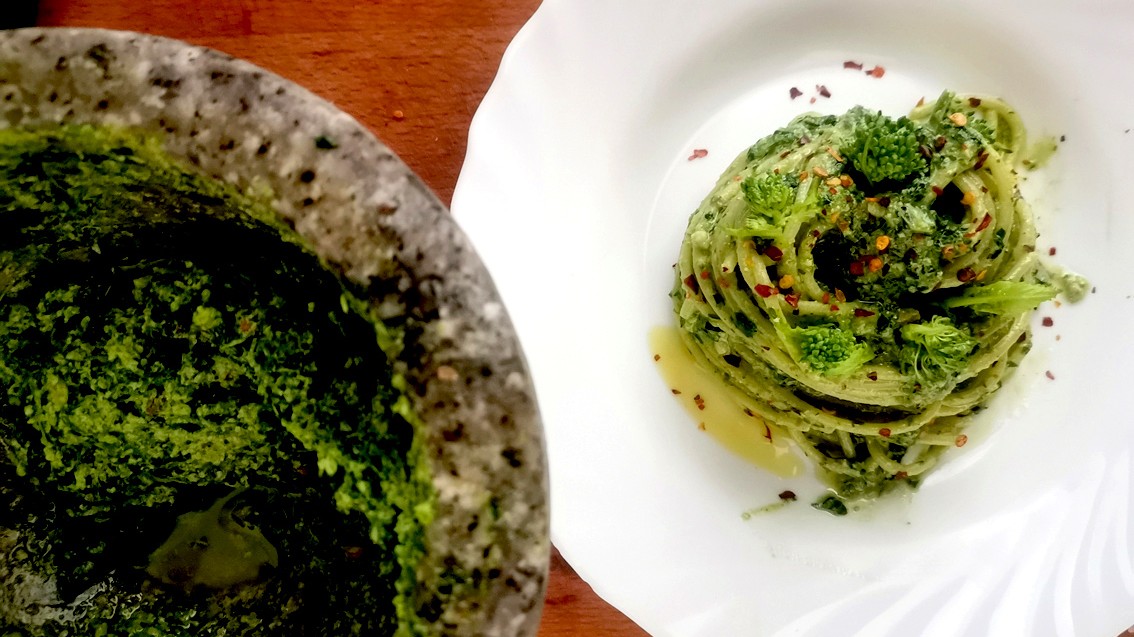
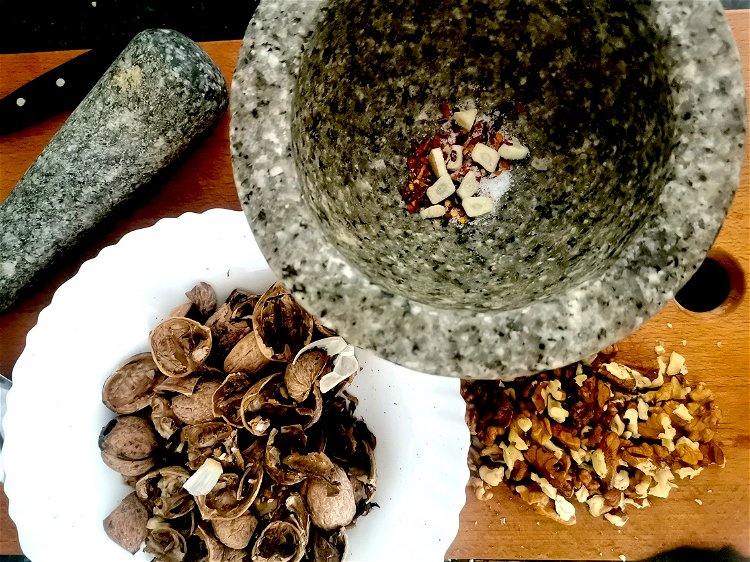
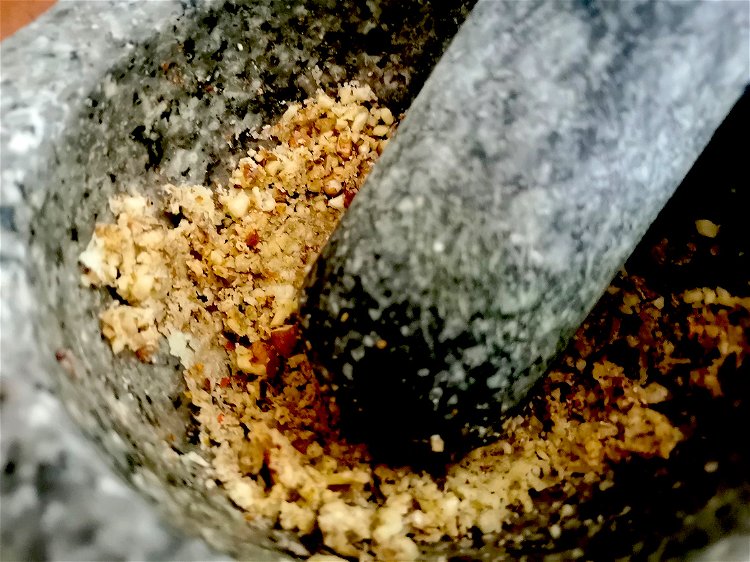
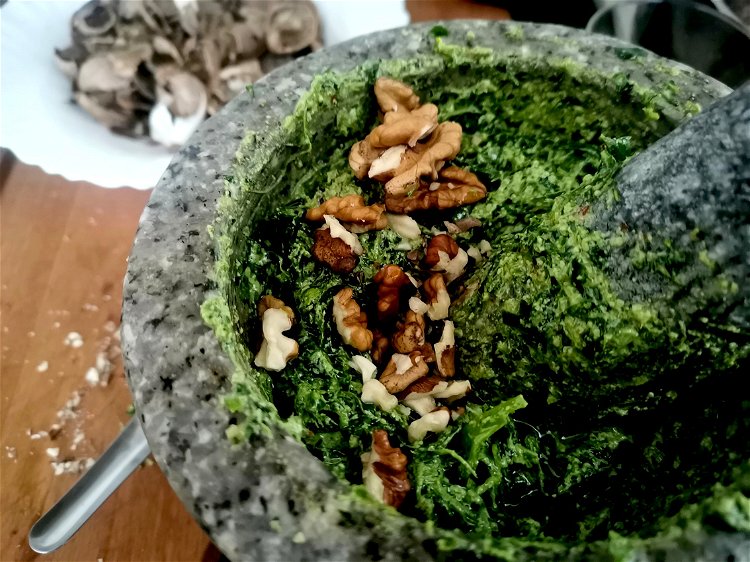
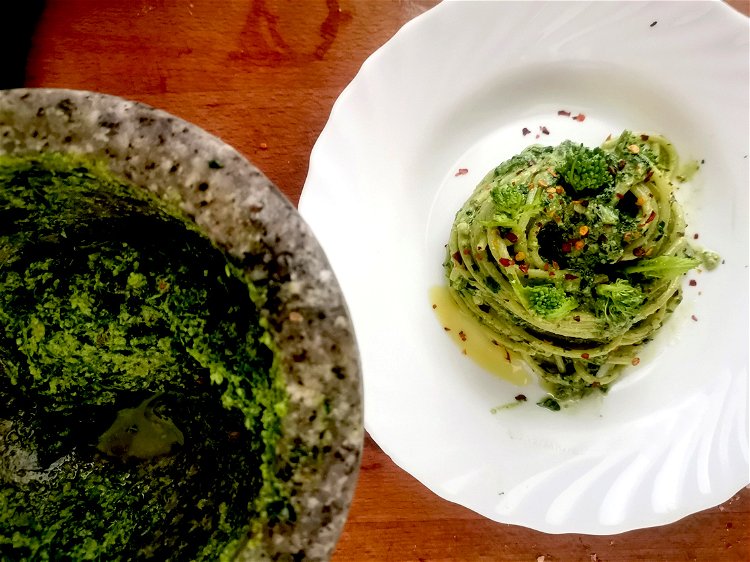
Leave a comment